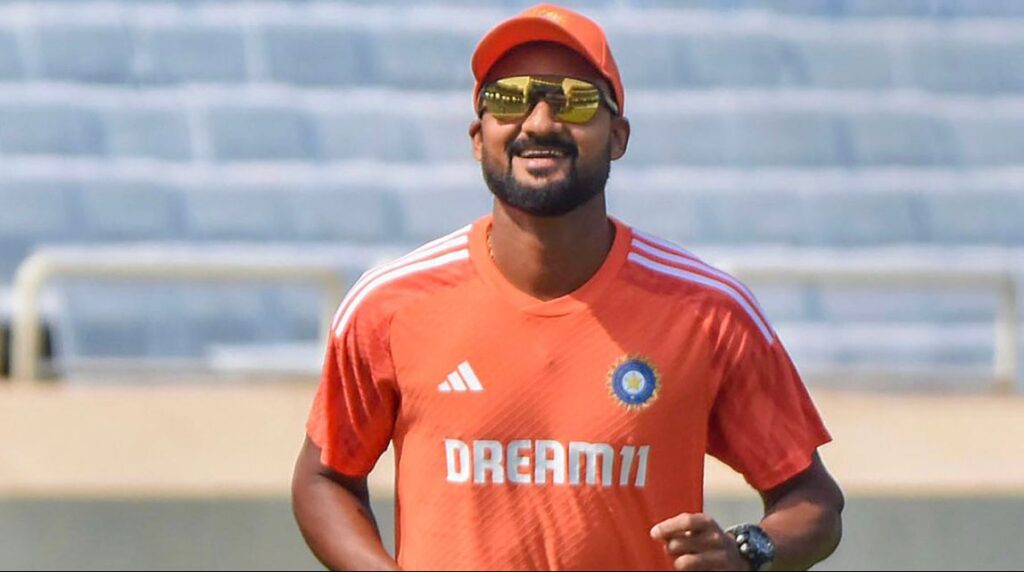
Shamik Chakrabarty in Kanpur
Back in 2011-12, a Ranji Trophy match between Mumbai and Odisha became high-profile. It was not because of Ajit Agarkar storming off after falling out with then Mumbai coach Sulakshan Kulkarni, but because it was Zaheer Khan’s comeback game after an injury lay-off. India’s tour of Australia was around the corner, and Zaheer was considered central to India’s chances of performing well.
As it turned out, India suffered a humiliating 4-0 whitewash in Australia under MS Dhoni. Zaheer had a decent outing – 15 wickets from four Tests at an average of 31.80 – but he seriously lacked support. The tourists even had to resort to R Vinay Kumar’s military-medium pace in one of the Tests. In fact, this had long been India’s story in overseas Test series: a lack of good support bowlers around the top two.
After Virat Kohli took charge as India captain, he addressed this issue and created a fast-bowling group capable of making an impact regardless of conditions. Jasprit Bumrah’s emergence was a godsend, and India also had the likes of Mohammed Shami, Ishant Sharma, and Umesh Yadav. Now, Indian cricket has entered a phase where they need to revamp their pace attack.
Bumrah, of course, remains the top choice. But Shami is still recovering from his Achilles tendon surgery, and at 34 years old, there is naturally a question mark over his long-term future. Mohammed Siraj’s form has been a bit inconsistent lately, although the Hyderabad quick is expected to regain his rhythm sooner rather than later. Perhaps a short break before the Australia series in the winter will help him.
In Australia, however, India will still require a fourth seamer capable of providing breakthroughs and supporting the frontline duo of Bumrah and Shami. If Akash Deep continues to perform as he has been, the Bengal seamer could be the answer to this problem.
Deep has a knack for taking wickets in his first spell. He did it on his Test debut against England in Ranchi earlier this year, removing Ben Duckett and Ollie Pope in his fifth over, followed by Zak Crawley’s scalp in his sixth. In the first Test against Bangladesh in Chennai, Deep was brought into the attack as first change in the first innings, and he made an instant impact, accounting for Zakir Hasan and Mominul Haque on successive deliveries. On both occasions, length did the trick, as did the bowler’s ability to make the ball skid off the surface.
Only 35 overs of play have been possible over two days in the second Test here in Kanpur. While Day 1 was truncated, Day 2 was a washout, with persistent drizzle forcing the day to be called off. At 1:58 pm on Saturday, the umpires walked in, had a chat with the groundsmen, and called off the day’s play. Deep has bowled 10 overs in this game so far, claiming 2/34. Once again, both his wickets – Zakir and Shadman Islam – came in his first spell. On a slow Green Park pitch, he beat Islam for pace to trap the opener leg-before.
The most impressive part was that on the first day, he was the team’s best bowler, consistently hitting the right length. For a change, Bumrah’s radar didn’t quite work in the nine overs he bowled. Siraj put in a lot of effort, but he was once again a couple of feet short. Deep stood up to be counted.
“I’m not thinking too far ahead,” Deep told reporters before the Kanpur Test. All said and done, the Indian team management has been developing him for the five-Test series Down Under. His net sessions under bowling coach Morne Morkel and other support staff have been intense. And if the 27-year-old continues his development, he could be the solution to India’s support-bowler problem away from home.
For more sports content: https://revsportz.in/





